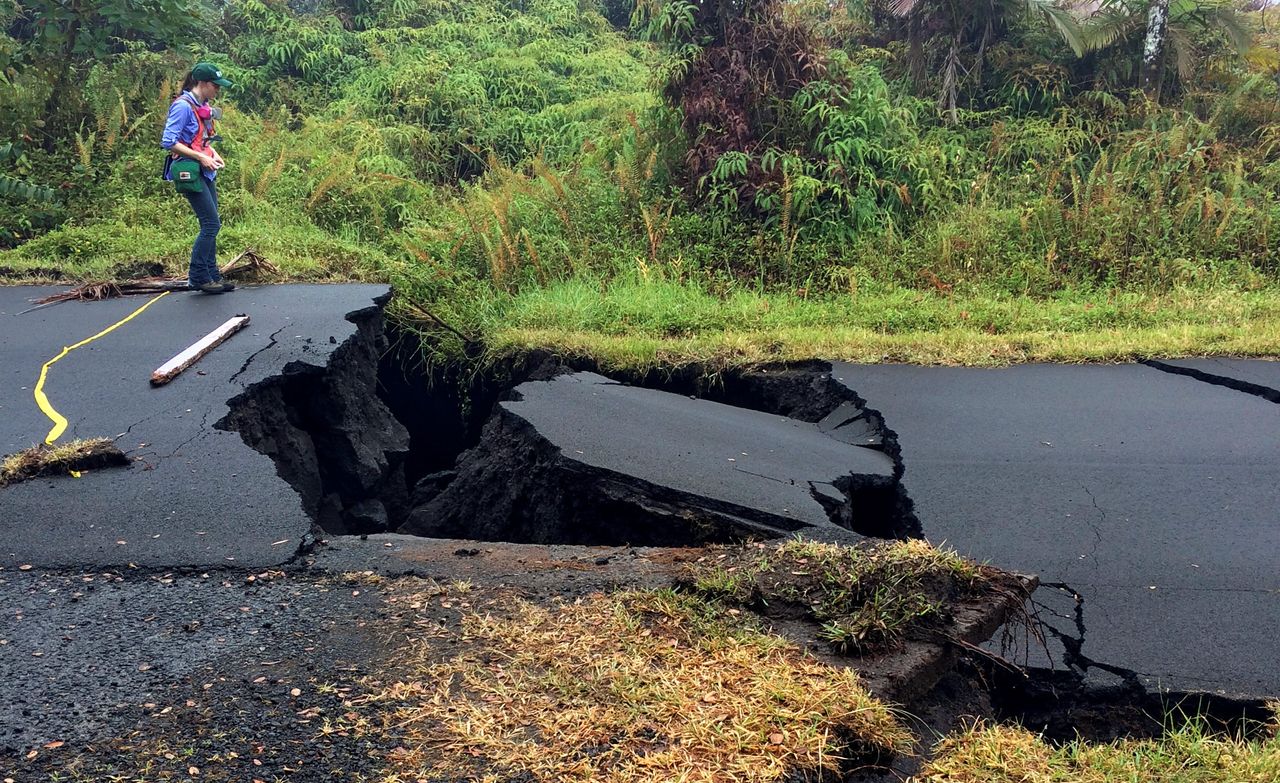Hawaii’s Kilauea volcano spewed ash nearly six miles (9 km) into the sky on Thursday and scientists warned this could be the first in a string of more violent explosive eruptions with the next possibly occurring within hours.
“This has relieved pressure temporarily,” US Geological Survey geologist Michelle Coombs told a news conference in Hilo. “We may have additional larger, powerful events.”
Residents of the Big Island were warned to take shelter from the ash as toxic gas levels spiked in a small southeast area where lava has burst from the ground during the two-week eruption.
The wind could carry Kilauea’s ash plume as far as Hilo, the Big Island’s largest city and a major tourism center, the County of Hawaii Civil Defense warned in an alert.
“Protect yourself from ash fallout,” it said.
The volcanic activity was such that it was easily photographed from the International Space Station.
Some Big Island residents had feared “the big one” after Kilauea shot anvil-sized “ballistic blocks” into the visitors’ car park on Wednesday and was rocked by earthquakes that damaged buildings and cracked roads in the park that was closed last week.
But geologists said the 4:15 am (10:15 am EDT) explosion was not particularly large and on a par with the last series of steam-driven blasts, which took place in 1924.
“The activity is such that they can occur at any time, separated by a number of hours,” Hawaiian National Volcano Observatory Deputy Scientist-In-Charge Steve Brantley told reporters on a conference call.
Geologists said it was extremely unlikely Kilauea would have a massive eruption like that of 1790 which killed dozens of people in the deadliest eruption to occur in what is now the United States.

Kilauea’s falling lava lake has likely descended to a level at or below the water table, allowing water to run on to the top of its lava column and create steam-driven blasts, they said.
“I don’t think there is a big one that’s coming,” said University of Hawaii vulcanologist Scott Rowland.
“I think it’s going to be a series of explosions similar to the one that happened this morning, and that’s based on what happened in 1924, which is really our only analogy,” he said of the nearly century old event, which lasted 2-1/2 weeks and killed one person who was hit by a “ballistic block.”
On Thursday, a 21st fissure also opened in Leilani Estates while other fissures reactivated with lava, the Hawaii Civil Defense said in an alert.